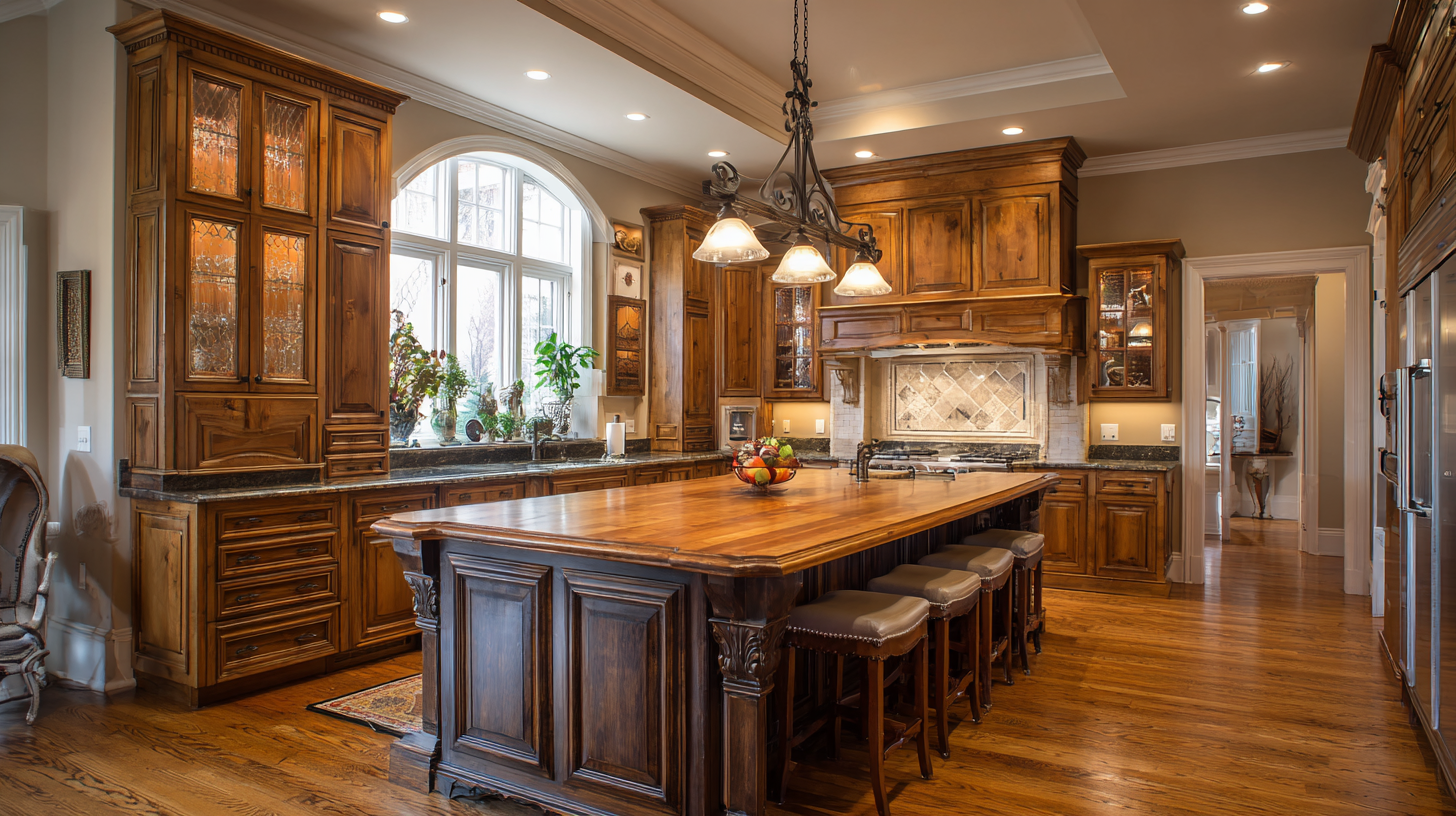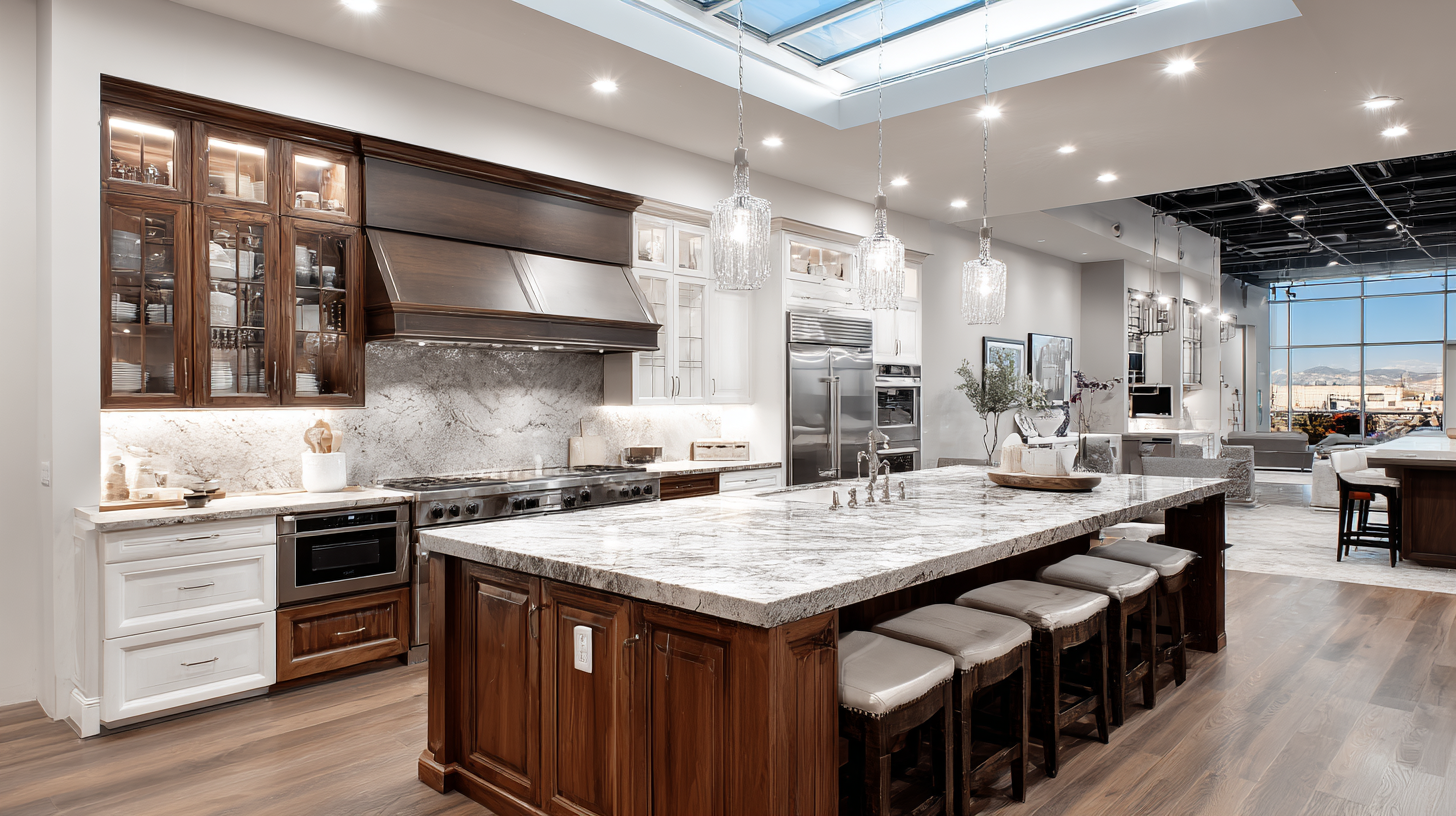Ultimate Guide to Sourcing Custom Cabinets for Your Business Success
In today's competitive business landscape, the significance of having a well-designed space cannot be overstated, and custom cabinets play a pivotal role in achieving that. This ultimate guide aims to equip business owners and decision-makers with essential insights into sourcing custom cabinets that not only enhance functionality but also elevate the aesthetic appeal of their establishment. From understanding material options to evaluating craftsmanship, we will delve into the critical aspects that contribute to making informed choices in the world of custom cabinetry. With the right approach, your investment in custom cabinets can lead to improved organization, boosted productivity, and ultimately, greater business success. Join us as we explore the perfect blend of style and practicality, ensuring that your tailored cabinetry meets your unique needs and sets your business apart.

Identifying Your Business Needs for Custom Cabinets
When it comes to sourcing custom cabinets for your business, identifying your specific needs is crucial. According to a recent report by the Cabinet Makers Association, 65% of businesses that invested in personalized cabinetry saw a significant increase in both employee productivity and customer satisfaction. This suggests that tailored solutions not only enhance functionality but also contribute to a positive work environment.
Tip: Before you dive into sourcing, conduct a thorough assessment of your operational requirements. What functionalities do you need from your cabinets? Consider the type of materials, dimensions, and styles that will best suit your everyday tasks. It’s essential to collaborate with your team to gather insights, as this input can lead to better designs and ultimately higher returns on your investment.
Moreover, be mindful of your budget and timeline. A study from the National Kitchen & Bath Association indicates that businesses planning their cabinetry projects ahead of time can save up to 15% on costs. Establishing a clear budget without compromising quality is vital for achieving success.
Tip: Set realistic goals and deadlines for the project, and ensure clear communication with your suppliers to avoid any misunderstandings down the line. By meticulously planning and evaluating your business needs, you can optimize the benefits of custom cabinets tailored to your operations.
Understanding Different Styles and Materials for Cabinets
When sourcing custom cabinets for your business, understanding the different styles and materials available can significantly impact both aesthetics and functionality. Traditional styles, such as Shaker or Victorian, often feature intricate details and rich wood finishes. These designs emanate a classic charm, making them suitable for establishments aiming for a timeless appeal. In contrast, contemporary styles, characterized by sleek lines and minimalist aesthetics, employ materials like glass and metals. Such cabinets not only enhance modern spaces but also promote an airy feel, perfect for urban settings or trendy eateries.
Material selection is equally crucial in cabinet design. Solid wood offers durability and a sense of warmth, but it can come at a higher cost. Plywood is a popular alternative, known for its strength and resistance to warping, making it ideal for high-traffic areas. For businesses aiming for a budget-friendly option, MDF (medium-density fiberboard) provides a smooth surface for painting, allowing for creativity in design without sacrificing quality. By carefully considering styles and materials, businesses can create custom cabinets that not only meet functional needs but also enhance their overall branding and customer experience.

Building Relationships with Reliable Suppliers
Finding reliable suppliers is crucial when sourcing custom cabinets for your business. Establishing strong relationships with these suppliers not only ensures quality products but also fosters a sense of trust and cooperation. Start by researching potential suppliers in your area or online, focusing on their reputation, product range, and customer reviews. Reach out to them for initial discussions and gauge their willingness to collaborate. Look for suppliers who prioritize communication and transparency, as these qualities are indicators of a reliable partnership.
Once you’ve identified potential suppliers, invest time in building your relationships. Regular communication is essential—schedule meetings to discuss your needs and expectations, and be open to feedback. Consider visiting their facilities to see their operations firsthand and understand their capabilities. This personal touch can significantly enhance trust and mutual respect, making it easier to negotiate terms and address any issues that arise in the future. Remember, a strong, reliable supplier relationship can be a pivotal element in the success of your custom cabinets business.
Negotiating Costs and Contracts for Custom Cabinet Projects
When sourcing custom cabinets, understanding the intricacies of negotiating costs and contracts is crucial for ensuring your project's success. Recent data indicates that custom cabinetry can account for up to 30% of a kitchen renovation's total cost. This emphasizes the importance of obtaining accurate estimates and considering the implications of tariffs, particularly as recent developments show increasing duties on imported materials which can heighten costs for contractors. For example, a recent report highlighted that with tariffs imposed on various goods, businesses have seen a significant increase in material prices—up to 25% in some cases.

Engaging in open conversations with contractors can yield valuable discounts; suppliers often offer reduced prices to builders who can guarantee larger orders. Utilizing a Guaranteed Maximum Price (GMP) contract can also mitigate unexpected expenses, as it allows for a clear outline of costs, thereby preventing the project from spiraling into "costs and costs and costs." By leveraging these negotiations effectively, businesses not only manage their budgets better but also ensure that their custom cabinet solutions align with competitive pricing strategies, thereby bolstering their operational success amidst fluctuating market conditions.
Ensuring Quality Control and Timely Delivery in Sourcing
In today's globalized economy, sourcing custom cabinets entails more than just selecting materials and designs; it also requires meticulous attention to quality control and timely delivery. According to a report by Logistics Management, inefficiencies in supply chain operations can lead to increased costs, with supply chain disruptions costing companies up to 20% of their total revenue. Therefore, businesses must emphasize the importance of establishing strong partnerships with reliable suppliers who can consistently meet quality standards and deadlines.
Moreover, the complexity of global supply chains necessitates a proactive approach to risk management. A recent article in the International Journal of Production Economics highlights that nearly 75% of organizations face challenges related to coordinating supplier operations across different regions. To mitigate these risks, companies should implement advanced tracking systems and regular audits to ensure compliance with quality control benchmarks. By prioritizing these practices, businesses can enhance their sourcing strategies, ensuring that their custom cabinets not only meet client expectations but are also delivered on time, thus reinforcing their market position.
Understanding the intricate details of sourcing involves recognizing various sourcing methods, such as nearshoring and reshoring, which can lead to more predictable logistics and reduced lead times. A 2021 industry survey indicated that 63% of manufacturers are actively looking to adapt their sourcing strategies to enhance supply chain resilience. By integrating these approaches, businesses can effectively navigate the evolving landscape of global sourcing and maintain a competitive edge in the market.
Ultimate Guide to Sourcing Custom Cabinets for Your Business Success
| Dimension | Material Type | Quality Rating | Lead Time (Weeks) | Price per Unit ($) | Supplier Location |
|---|---|---|---|---|---|
| 36"x30" | Plywood | 4.5/5 | 4 | 250 | USA |
| 30"x36" | MDF | 4/5 | 6 | 200 | Canada |
| 24"x30" | Solid Wood | 5/5 | 3 | 300 | Mexico |
| 42"x30" | Particle Board | 3.8/5 | 5 | 150 | China |
| 36"x36" | Plywood | 4.7/5 | 4 | 350 | USA |

